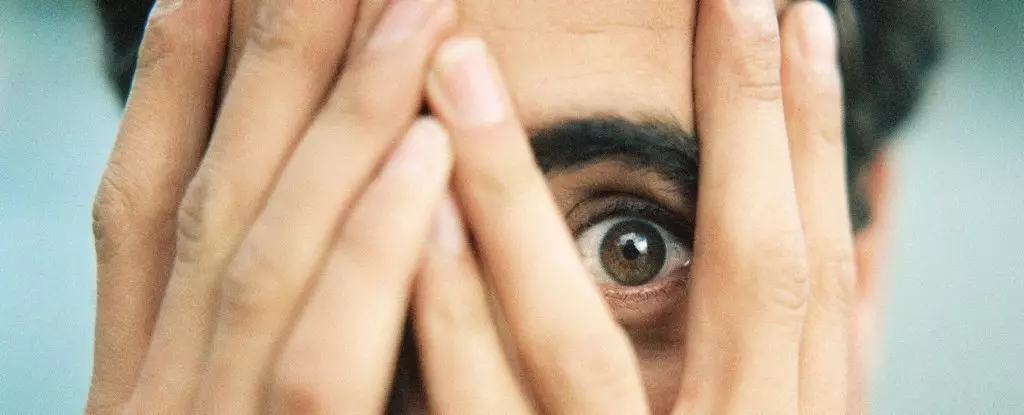In a world where countless individuals grapple with sensory sensitivities, the concept of misokinesia remains largely in the shadows. This lesser-known condition, characterized by an intense emotional reaction to seeing others fidget or make small repetitive movements, challenges our understanding of human perception and emotional regulation. Despite its apparent prevalence—affecting up to one-third of the population—it remains under-researched and misunderstood. The visceral discomfort that accompanies witnessing fidgeting can be distracting at best and excruciating at worst, raising questions about why our brains respond so negatively to such seemingly innocuous behaviors.
What makes misokinesia particularly intriguing is its subtlety. Unlike visible physical ailments or loud noises that draw obvious attention, the triggers for misokinesia often go unnoticed by others. Repetitive hand tapping, foot bouncing, or subtle shifting in seat can ignite a powerful emotional upheaval within some individuals. This disconnect—where innocent gestures become sources of distress—illuminates the complex interplay between perception, emotion, and social interaction. It also begs the question: why has science taken so long to investigate this phenomenon that seems more pervasive than initially thought?
A Closer Look at the Scientific Discovery
Recent research efforts have begun to shed light on misokinesia, revealing its potential scope and impact. A landmark study involving over 4,100 participants marked a significant step forward in understanding this condition. The findings were startling: approximately one-third of those surveyed reported experiencing some degree of discomfort when observing others’ repetitive movements. This suggests that misokinesia is not a rare anomaly confined to clinical populations but rather a common social challenge faced by many in everyday life.
What is perhaps more compelling is the emotional toll associated with this sensitivity. Those affected often report feelings of anger, frustration, anxiety, and even social withdrawal. In some cases, individuals limit their social interactions to avoid situations where fidgeting might occur. Such responses not only diminish quality of life but also highlight how misokinesia can subtly erode social engagement and mental well-being. When a simple glance or casual observation alters someone’s mood or behavior, it underscores the profound influence of unnoticed sensory triggers on human interaction.
Decoding the Brain’s Reaction: Why Do We Respond So Strongly?
Despite these findings, the neurological underpinnings of misokinesia remain murky. Initial hypotheses pointed toward visual-attention deficits—essentially, the idea that certain individuals are more attuned or less able to filter out peripheral visual stimuli. However, early experiments did not yield conclusive evidence supporting this view, leaving scientists pondering alternative explanations. If attentional hypersensitivity isn’t the main culprit, then what is?
One promising avenue involves the role of mirror neurons—specialized cells in our brain that activate both when we perform an action and when we observe someone else doing it. These neurons underpin empathy, allowing us to resonate with others’ emotional states, but they might also have a darker side. Jaswal, a leading researcher in this field, hypothesizes that individuals with misokinesia may have hyperactive mirror neuron systems that inadvertently mirror not just emotions but also physical actions like fidgeting. The result? An automatic, subconscious linkage that triggers discomfort or distress upon witnessing movements associated with anxiety or nervousness.
This theory aligns with anecdotal accounts of misokinesia sufferers who report feeling anxious or irritated merely by seeing someone else fidget—possibly because they are unconsciously empathizing with the subject’s emotional state. Such reactions may create a feedback loop, intensifying emotional responses and reinforcing the aversion to these small, repetitive movements. Understanding whether this neural mirroring is responsible could unlock new pathways for treatment or management, but further research is essential to confirm these biological mechanisms.
Implications for Society and Personal Well-Being
The societal implications of misokinesia extend far beyond individual discomfort. Workplace environments, classrooms, and social gatherings often involve multiple individuals engaging in that unwitting fidgeting that triggers distress. Those affected might resort to avoidance, leading to social isolation, missed opportunities, or even mental health challenges. Recognizing misokinesia as a genuine and widespread condition should prompt a reevaluation of social norms and expectations around movement and behavior.
From a personal standpoint, awareness and understanding are crucial. Many sufferers feel shame or frustration, often assuming their reactions are abnormal or unwarranted. Education about misokinesia could foster empathy and patience, encouraging kindness and accommodation in shared spaces. It also opens up avenues for developing coping strategies—such as behavioral therapies or sensory management techniques—that can mitigate distress and enable individuals to participate more fully in social life.
As researchers continue unraveling the complexities of this condition, one thing is clear: misokinesia challenges our assumptions about human sensory processing. It invites us to consider how subtle behaviors influence well-being and how societal environments can be more inclusive. The journey toward understanding this phenomenon might be just beginning, but its potential to reshape perceptions of social interaction is already profound.


Leave a Reply